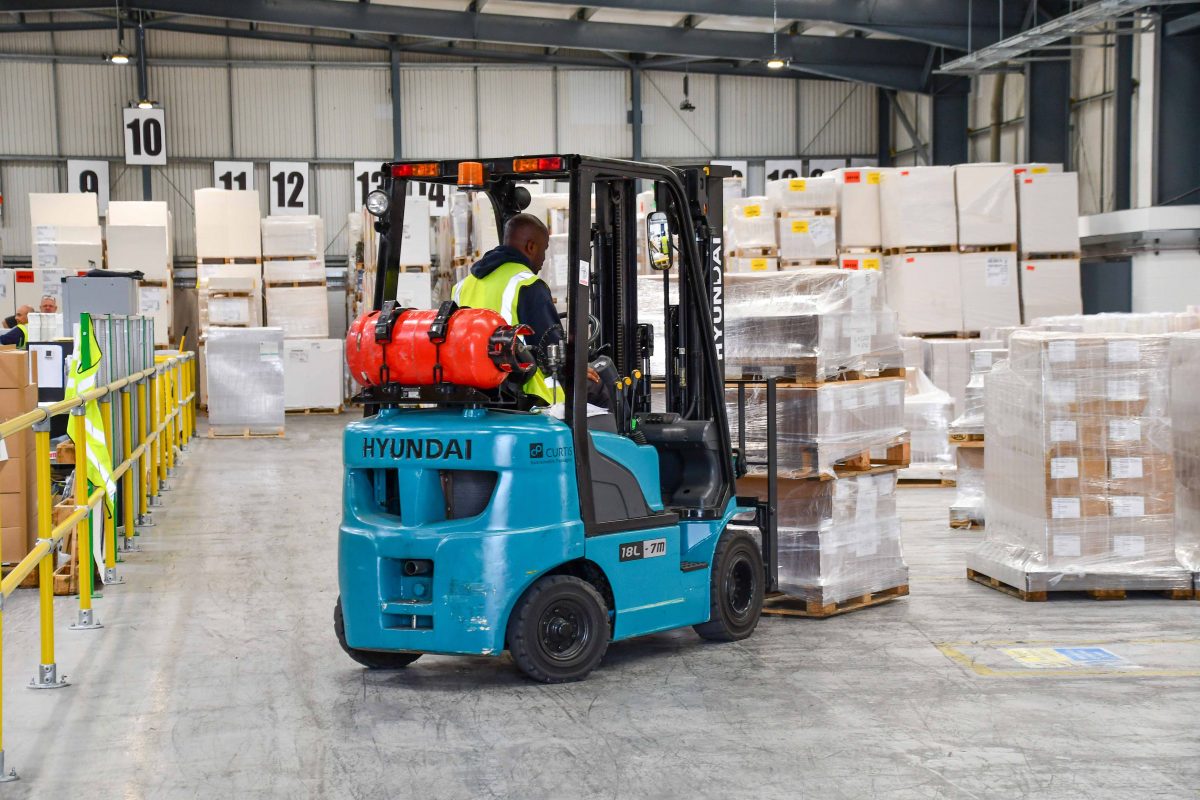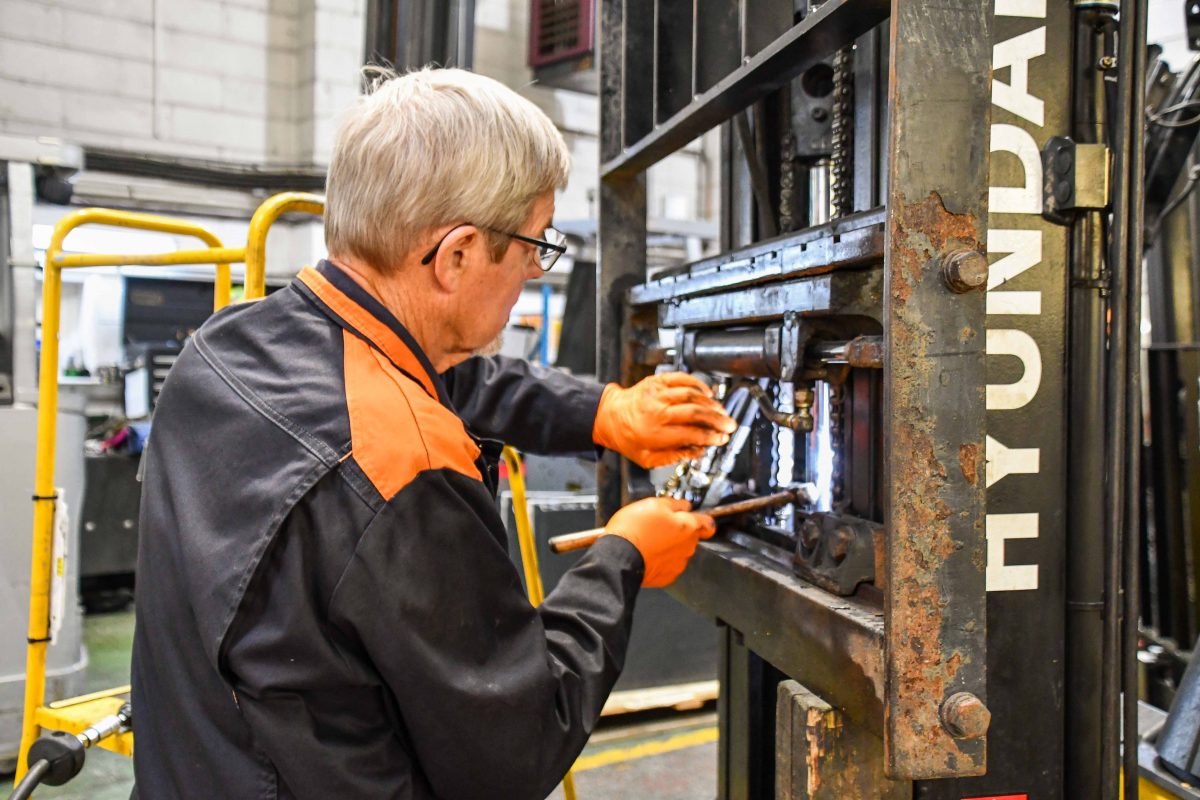Different Forklift Types Explained – With Pictures
It can be very difficult deciding which type of forklift will best suit your application or requirement, as they come in many different types and sizes. In this guide we will try to help you understand what each type is best suited and most commonly used for.
Counterbalance forklift trucks:
These are the original and most common type of forklift truck, and tend to be what people picture in their head when thinking of a forklift. The forks of a counterbalance truck point out from the front and lift up and down (as well as tilt backwards and forwards, and move side to side on some more advanced models, these features are called “Mast Tilt” and “side Shift” respectively.) counterbalance type forklift trucks are manufactured with either 4 wheels for greater stability, or 3 wheels for better manoeuvrability.
Counterbalance type forklifts also come in a range of fuel types, much like you have petrol, diesel and now electric cars. Counterbalance type forklifts come in Diesel, Electric and LP Gas powered models.
We have an entire separate guide detailing the advantages and disadvantages of the different fuel types Click Here to read it in more detail.
These forklifts come in a wide range of different sizes, some capable of lifting 1 tonne, Others capable of lifting 25 tonnes!
You will find counterbalance forklifts in various models operating almost everywhere, being used for unloading lorries, loading shipping containers, storing goods in high racking in warehouses, day to day lifting and manoeuvring in many different unique applications.
From the printing of newspapers, bottling of soft drinks, shipping of fruits and vegetables, and setting up TV and Movie production sets, there isn’t many things in life which aren’t at some point resting on the forks of a counterbalance type forklift.
Reach forklift trucks:
Reach trucks are usually used within warehouses with high racking, designed to be able to store a large amount of goods within a small (but tall!) warehouse. Reach forklift trucks are designed for indoor use, and they are always electric powered (Rather than diesel, or LP Gas)
These trucks have stabilizing legs at the front of the truck, to aid them in lifting relatively light loads (up to 2 tonnes) up to heights as high as 10 metres or more!
As you can imagine, manoeuvring a pallet into 10-metre-tall racking, while you are still on the ground can be quite difficult. Luckily many of the modern reach trucks are able to be fitted with a camera and screen, so that the operator is able to see from the perspective of the forks, giving them much greater visibility when working at heights
Reach type forklift trucks are designed for indoor use and are capable but not best suited for use outdoors, due to their low ground clearance and small front stabilizer wheels.
Hand Pallet Trucks (Also known as Pump Trucks):
Hand Pallet trucks don’t have engines or any form of electric motor. They are manually operated and designed to be pulled and pushed around from the handle by the operator.
The operator will push the Hand pallet truck forks under a pallet, Pump the handle up and down (this pumping motion makes the forks of the hand pallet truck raise up, via a hydraulic jack system) this lifts the pallet and load upwards off the floor, allowing it to be pulled and pushed around by the operator.
There are many different types of hand pallet trucks available, differing typically in fork size and lifting capacities (some are made to lift loads as heavy as 5 tonnes!)
Powered Pallet Type Trucks:
Powered Pallet type trucks operate very similarly to Hand pallet trucks, however they have the addition of having a build in electric motor, which means the palletised load will lift up at the push of a button, and the drive wheel will manoeuvre the truck around, so that you don’t have to push and pull it like you do with a hand pallet truck. all you have to do is guide it in the right direction and push the right buttons.
These powered pallet type trucks are designed to manoeuvre palletised goods around at floor level, with ease. they operate best indoors and on smooth surfaces, but can also be used to load and unload ramped lorries.
We hope this guide is helpful, however we understand how big of a decision choosing the right equipment can be. This is why we have a team of experienced specialists who offer site visits, to give advice and knowledge as to which manual handling equipment would be best suited to you and your application.






